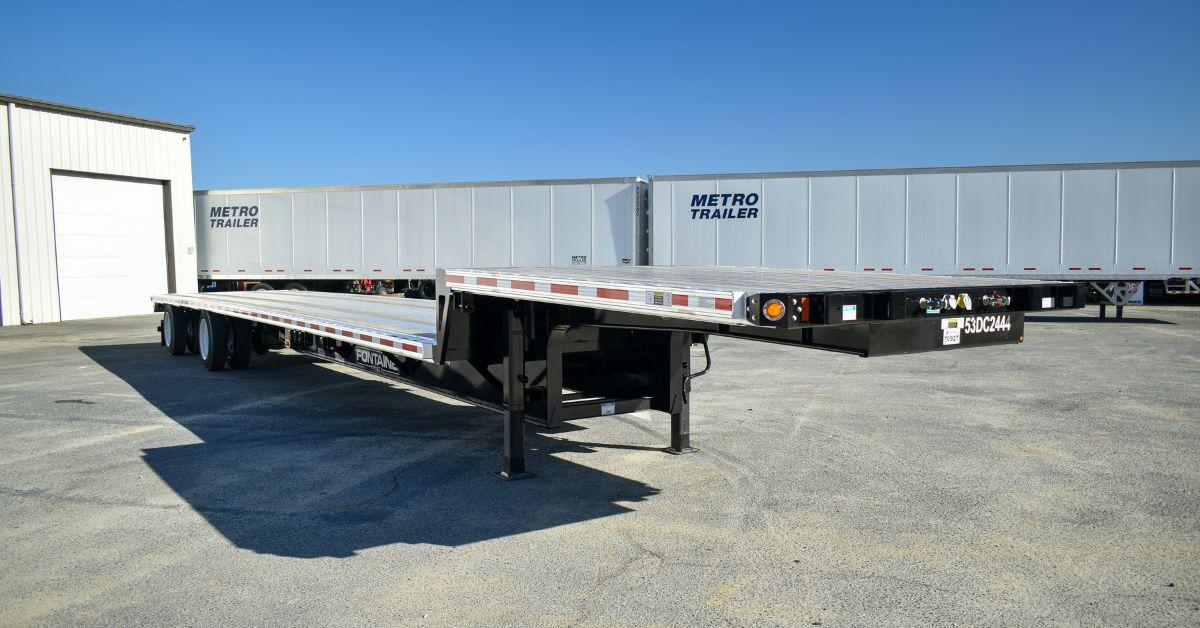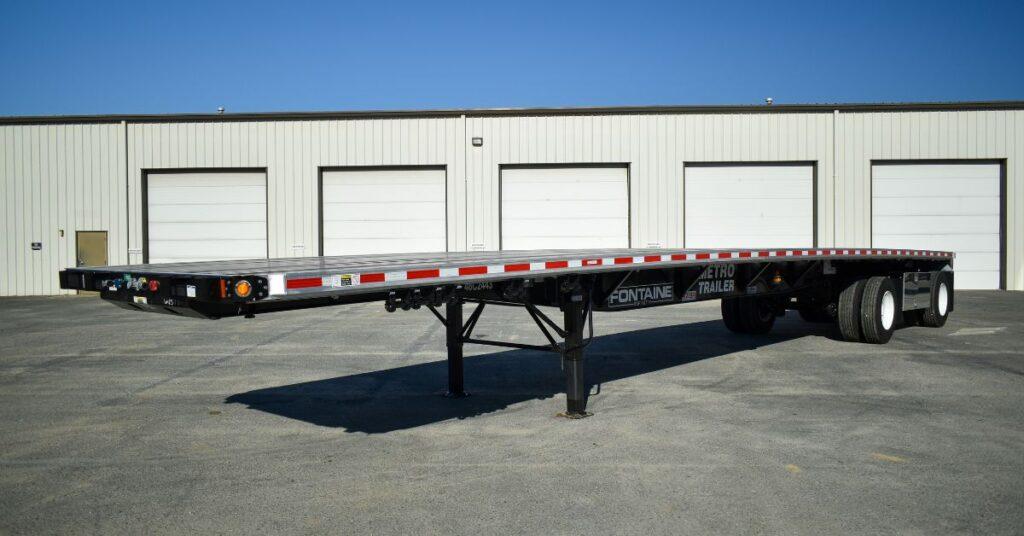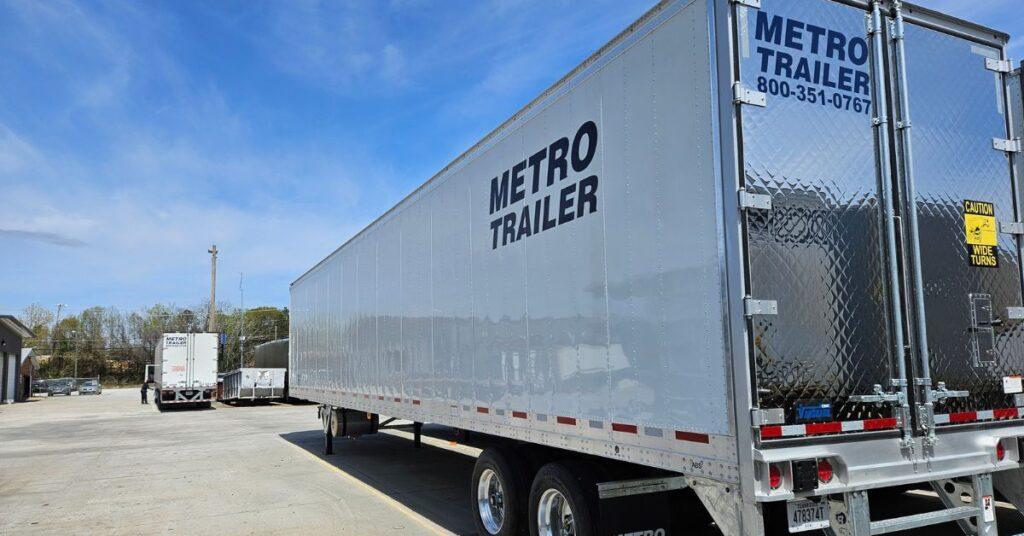
Dry Van vs. Flatbed Trailers: Which To Choose for Your Needs
Picture this: you’re planning to transport a load of goods, but the big question looms—how do you choose the right trailer? For most freight jobs, dry van and flatbed trailers are two of the most reliable options, each designed to handle unique types of cargo. But figuring out which one fits your needs best can be the difference between a smooth haul and unexpected headaches.
Think of a dry van trailer as the all-purpose cargo defender. Its enclosed, box-like structure shields goods from unpredictable weather, damage, and prying eyes. On the other hand, a flatbed trailer is the open-air workhorse of the freight world. Need to move massive machinery, towering stacks of lumber, or oddly shaped equipment? A flatbed’s flexibility lets you load it from any side and transport what might not fit elsewhere.
Picking the wrong type of trailer could mean putting cargo at risk or facing unnecessary hassle. To help you make the best choice, this post dives deep into what sets dry van and flatbed trailers apart, their specific advantages, and how each might align with your transportation goals. By the end, you’ll feel confident knowing which trailer can handle the job right.
What Are Dry Van Trailers?
Dry van trailers are built to shield shipments from unpredictable weather, road debris, and even unwanted eyes, making them one of the most secure ways to move goods. Sizes vary, but most dry vans fall between 28 to 53 feet in length, offering plenty of room to haul a wide range of freight. The standard, rectangular design makes loading and stacking goods efficient—perfect for maximizing space while keeping everything organized.
Advantages of Dry Van Trailers
One of the biggest perks of a dry van trailer is the all-around protection it offers. Goods stay secure inside the enclosed space, free from rain, dust, dirt, and other environmental factors that could cause damage during transit. They also keep your cargo hidden from view, adding an extra layer of security against theft.
Their straightforward design caters to a wide range of industries, making them a go-to choice for businesses of all kinds. Plus, since they’re so common, finding a dry van trailer for rent is usually quick and easy—most carriers operate fleets packed with them.
Common Cargo
Dry vans specialize in transporting everyday goods—the kind of stuff we all use. Packaged freight like clothing, electronics, and furniture are some of the most common items you’ll find inside a dry van. If the cargo can fit neatly into a defined space and doesn’t need a controlled temperature, a dry van is likely the solution you’re looking for.

What Are Flatbed Trailers?
Flatbed trailers are exactly what they sound like—an open trailer with a flat, level surface. Unlike enclosed trailers, they have no sides or roofs, creating an open platform that allows you to load cargo from any direction. This design makes flatbeds a go-to option for oversized or irregularly shaped items that wouldn’t fit inside a standard trailer.
Advantages of Flatbed Trailers
If you’ve got heavy construction equipment, industrial machinery, or enormous stacks of building materials, a flatbed has the space and strength to handle them with ease. Loading and unloading is a breeze since you’re not restricted to a single door or narrow loading space. Forklifts, cranes, and other machinery can access the trailer from anywhere, cutting down on the time and effort needed to get your cargo onboard.
Flatbeds are also ideal for shipments that exceed size limitations. Long steel beams, bulky machinery, or anything taller than a standard trailer won’t be an issue.
Common Cargo
Lumber, steel pipes, and other construction materials are among the most common loads. Large machinery like bulldozers and farm equipment also find their way onto flatbeds regularly.
Prefabricated structures like pipes, giant spools of cable, and even components for wind turbines often rely on flatbeds due to their large and awkward dimensions. Essentially, if a load is too unwieldy for a dry van or needs to remain accessible, a flatbed is the answer.

Choosing Your Ideal Trailer
Deciding between a dry van and a flatbed starts with understanding the specifics of your cargo. Size and shape are crucial—are you dealing with standard boxes or oversized, irregular items? Fragility and weather sensitivity also come into play. Dry vans provide enclosed protection, while flatbeds leave cargo open to elements, suitable only for weather-tolerant goods or those packaged securely.
Loading and unloading logistics can shape your choice, too. If your shipment requires side or crane access, a flatbed makes sense, but a dry van might be better suited for dock-based operations with forklifts.
Good To Know
While both trailer types are dependable, flatbeds might involve extra measures like tarps and straps, which could slightly impact cost, especially over long hauls. Evaluate the distance and the frequency of your trips to decide what makes the most financial sense.
Use Cases for Dry Van Trailers
Dry vans are a perfect solution for shipping standard, palletized, or boxed goods that don’t need to brave the elements. Retail and consumer products like clothing, electronics, and furniture are common examples, as these items require security and consistent handling.
If your shipment involves multiple smaller items that fit into a compact and weatherproof environment, a dry van is your go-to. These trailers also shine in scenarios where unloading at a dock or warehouse is a must.
Use Cases for Flatbed Trailers
For loads that defy convention due to their size or weight, flatbed trailers emerge as the ideal choice. Construction industries frequently rely on flatbeds to transport bulky equipment like excavators or cranes. Industrial sectors use them for large materials like steel beams or pipes.
They’re also an excellent solution for prefabricated structures, such as modular homes or wind turbine components. Whether it’s a short delivery to a construction site or a long-distance haul to a factory, flatbeds excel at accommodating large, unwieldy items that dry vans simply can’t handle.
Load Your Cargo With Confidence
Choosing the right trailer is more than ticking off a checklist—it’s about finding the best solution for your freight challenges. Every shipment tells its own story, from neatly packed consumer goods to towering industrial machinery. That’s why the decision between a dry van and a flatbed should always start with what your goods need to arrive safely, efficiently, and cost-effectively.
Think about it this way: are you prioritizing protection, versatility, or the ability to transport oversized loads? At the end of the day, the best trailer is the one that meets your goals with ease. Dry van or flatbed, the important part is making an informed choice based on your requirements.